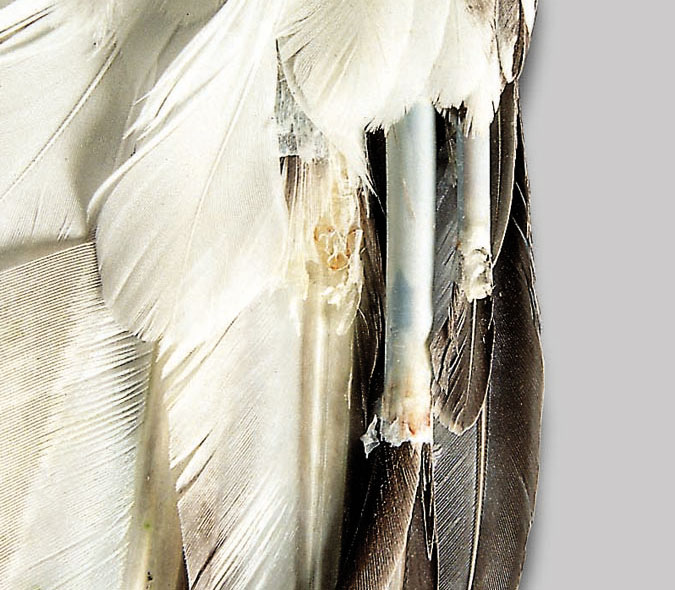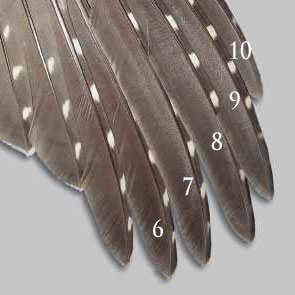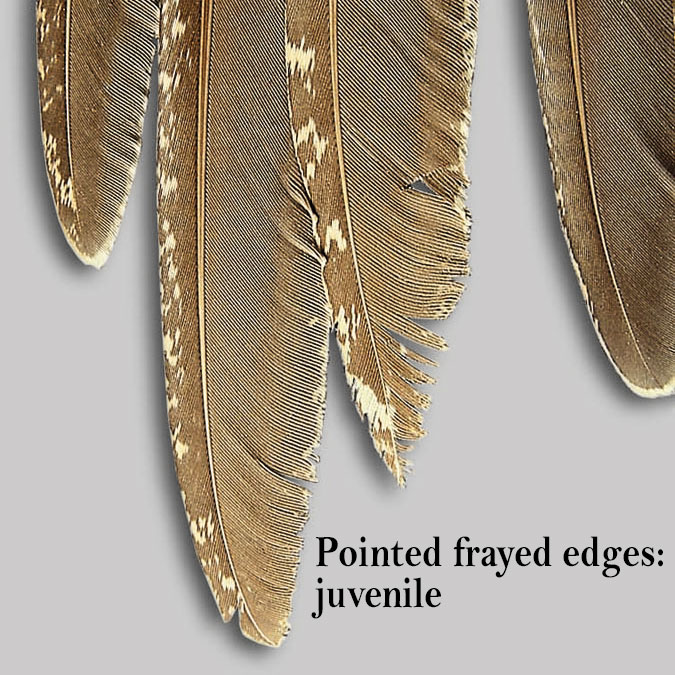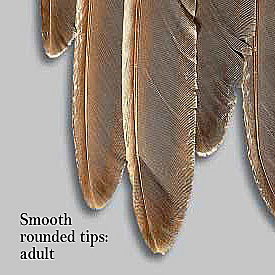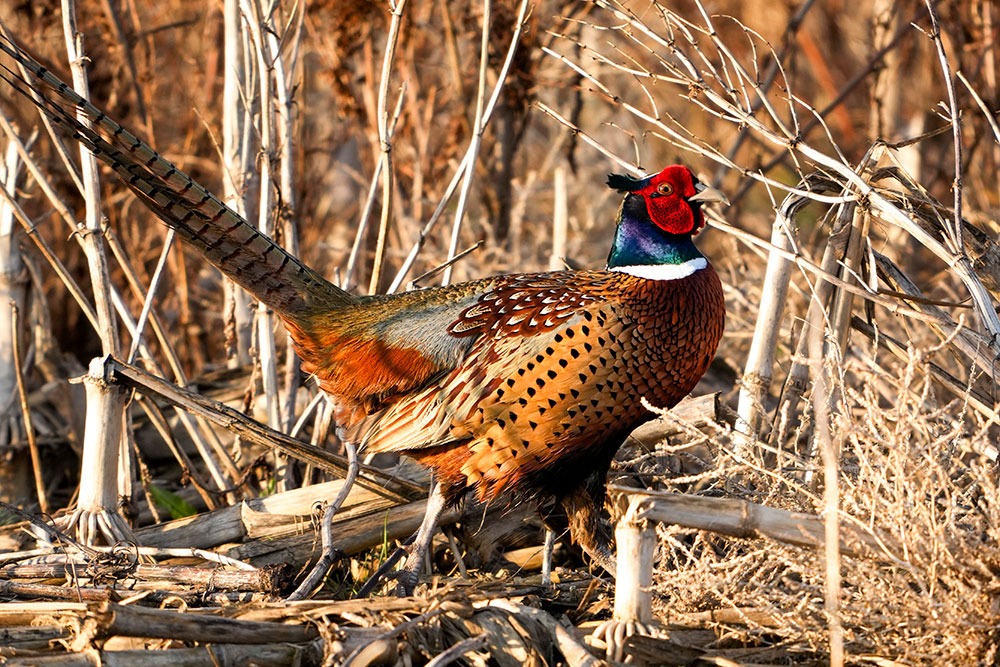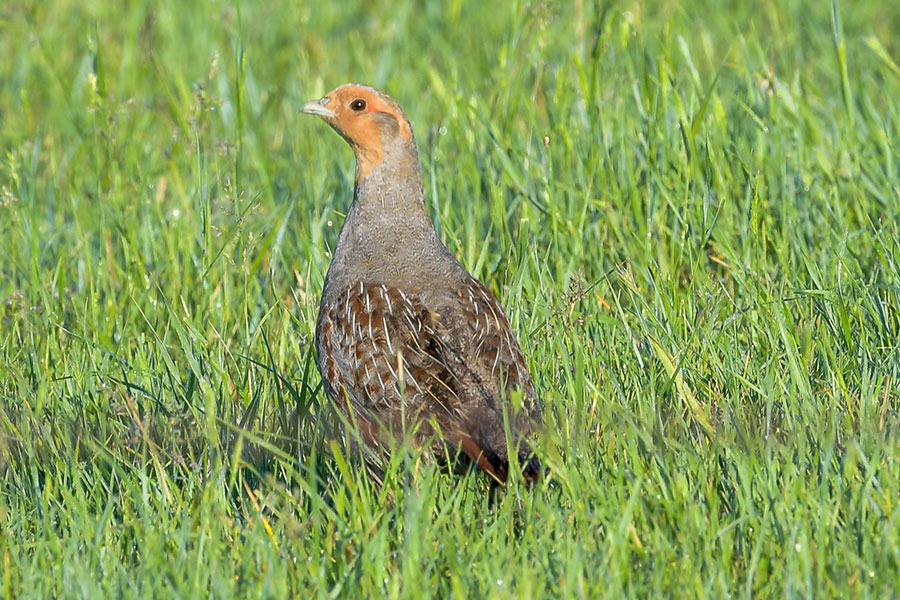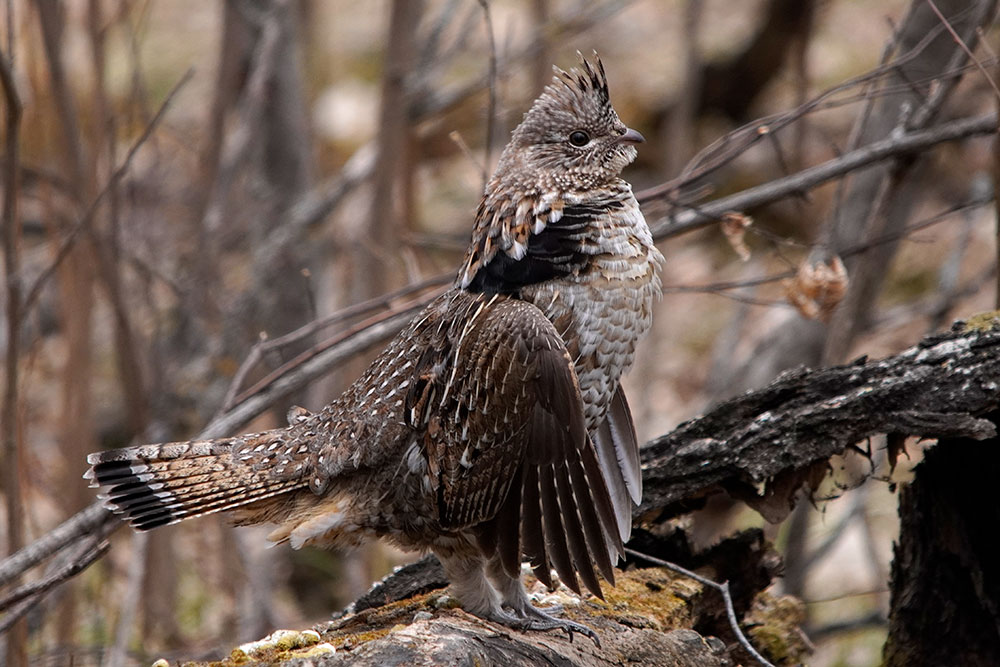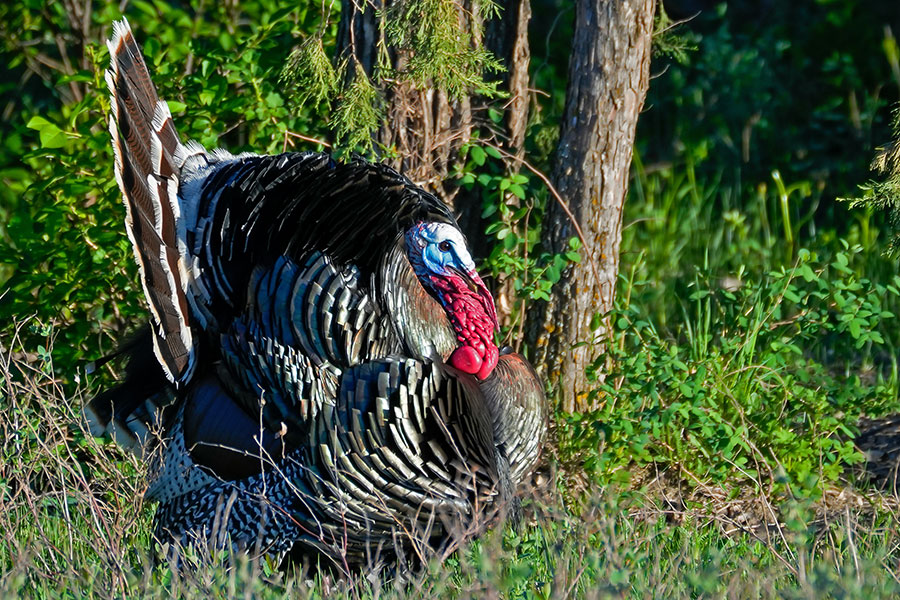Game Identification Guide (Upland and Waterfowl)
Upland Game and Waterfowl Identification Index
- Duck Identification
- Waterfowl Identification in the Central Flyway (Central Flyway Council Website (pdf))
- Wing Identification Information and Videos (USFWS Website)
Some Upland GameBasics
This guide covers five species of nonmigratory game birds in North Dakota – ring-necked pheasant, sharp-tailed grouse, gray partridge, ruffed grouse and wild turkeys.
For all species except pheasant, the key to age is hidden in the wing, specifically the outer three large feathers called primaries. For identification purposes, these feathers are numbered. The outermost primary is number 10, the next one in is nine, the third one is eight, and so on. Each species has 10 primary feathers.
Adults of all upland species as well as fully-molted juvenile pheasants, exhibit the same characteristics – rounded feather tips and smooth edges on the outer three primaries.
Another good general rule for determining age is to look at the underside of the number nine and 10 primaries. Pull back some of the small covert feathers so you can see the “quill” part of the primary feather. If the quill part is blue and soft, that indicates the feather is still growing, and the bird is an adult. On the other hand, if the number eight and/or seven primaries are still growing, then the bird is likely a juvenile.
When wing primaries are fully grown, the quill part becomes hard and white or light gray, then you have to look at the wear and contour between eight and nine and 10.
To check wear of the outer primaries, look at the top side of the wing. If the ends of the outer two feathers are somewhat rounded and smooth, the bird is likely an adult. If ends are more pointed and frayed, the bird is likely a juvenile.
This rule applies to all birds covered here, except pheasants. Whether a rooster pheasant is an adult or juvenile is determined by the length and appearance of the spur between the foot and knee.
Sex determination is different for each species. For pheasants, the difference is obvious. For sharptails, key indicators are coloration of the central two tail feathers, and the feathers on the top of the head. For Huns, it’s feather coloration on the shoulder of the wing, and for turkey it’s the breast feather color pattern. The sex of a ruffed grouse is best determined by dot patterns on rump feathers.
This basic guide contains text and photos that will help you learn more about the birds you bagged. If you use it enough, you may reach a point where you no longer need it.
This photo shows the underside of a sage grouse wing. You can judge this bird as an adult, because the ninth and 10th primaries are still growing, as evidenced by the bluish "quill" section. If the eighth or seventh primaries look like the feathers in this photo, and the ninth and 10th primaries are not growing, the bird is a juvenile. These characteristics apply to all upland species except pheasant. Later in the season, when all feathers are completely grown, the "quill" part of the outer primaries will be white and hard. When this occurs, gauging the appearance of the outer three primaries will tell you if the bird is a juvenile or adult.
For all our upland game species except pheasants, the key to determining whether the bird is an adult or young-of-the-year is the appearance of the outer three primary wing feathers. The outermost large wing feather is numbered 10. The next one in is number nine, the next one is eight, and so on. While this is a sharptail wing, feather numbers are the same for all species.
The outer three primaries shown here are attached to the wing of a juvenile sage grouse. Note the pointedness and frayed edges on the eighth and ninth primaries. These characteristics are the same for juveniles of all upland species except pheasants. Also note the specks and more mottled coloring of the juvenile wing, compared to the adult.
Rooster Ring-Necked Pheasant
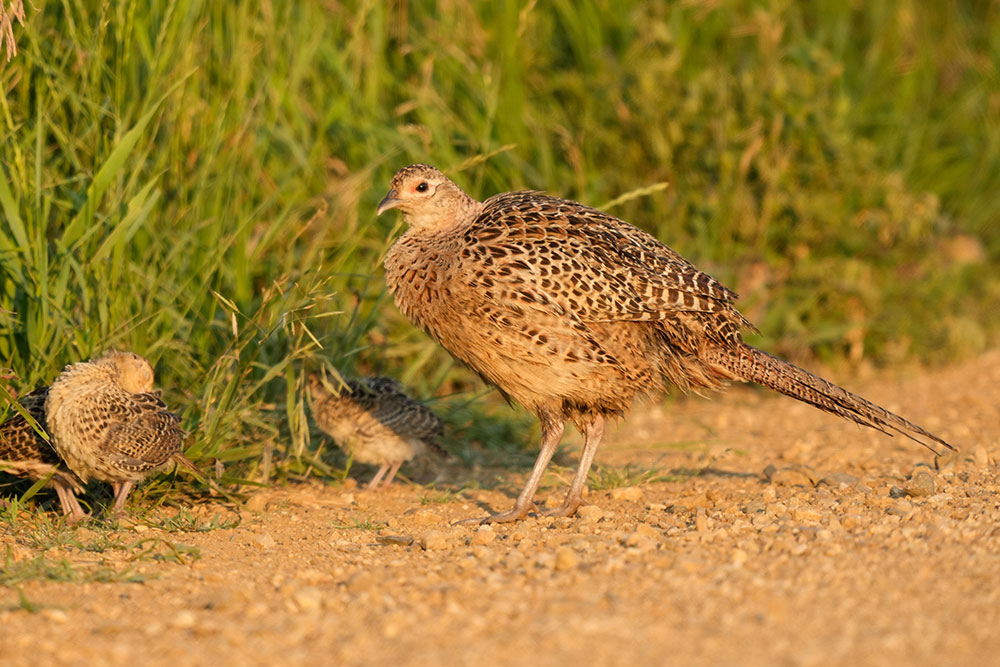
Ring-Necked Pheasant Hen
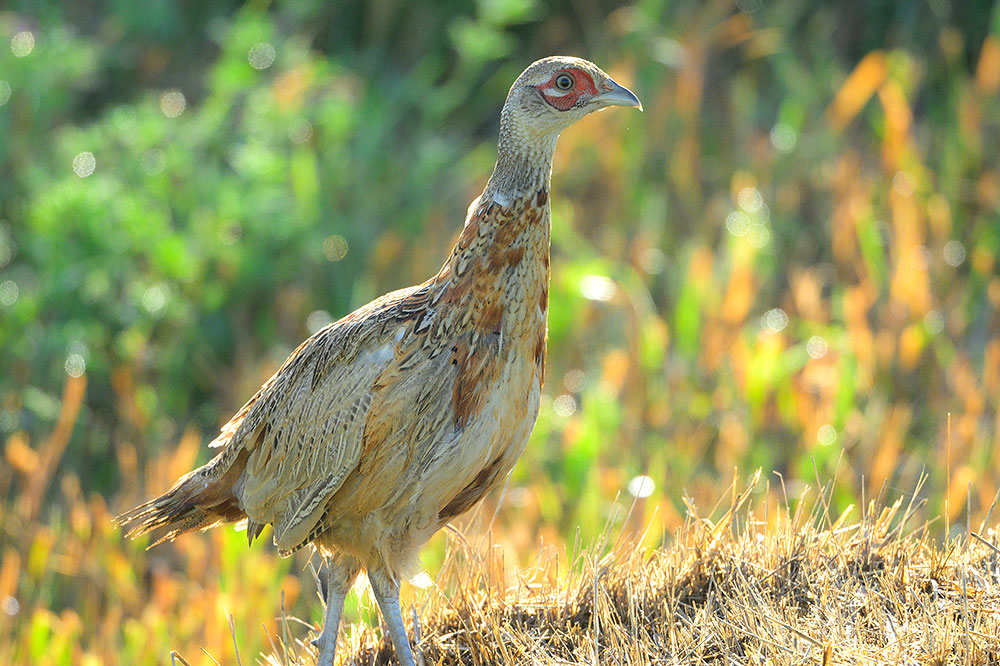
Young Ring-Necked Pheasant Rooster
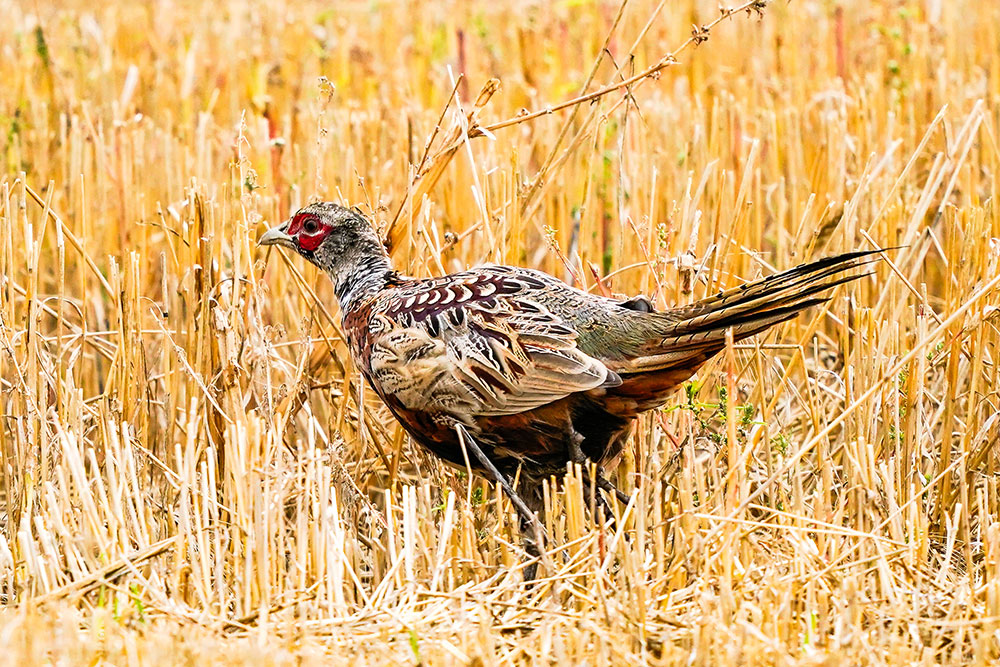
Young Ring-Necked Pheasant Rooster
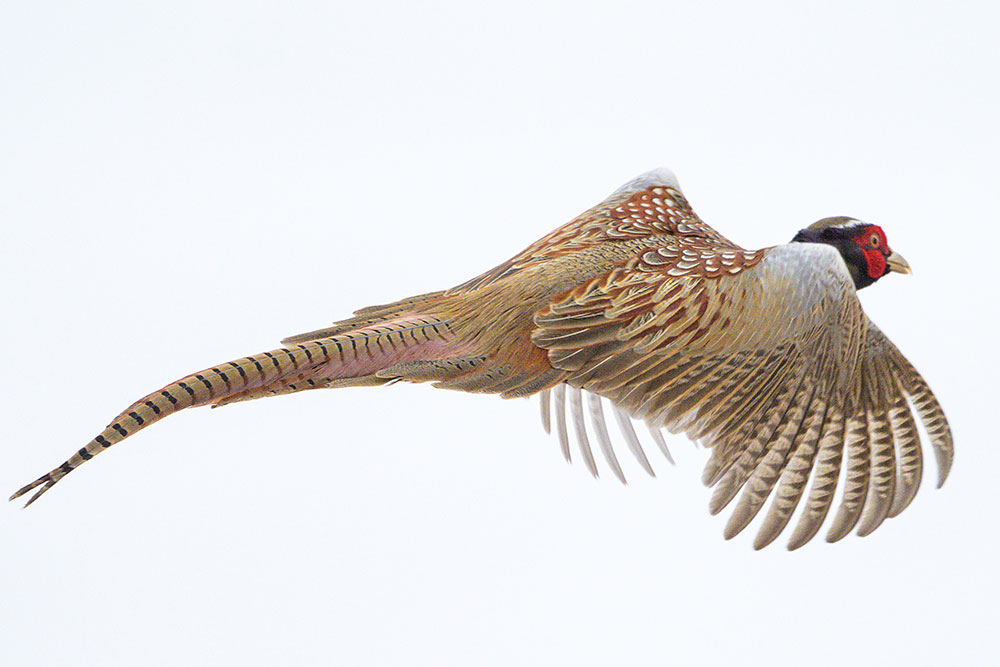
Ring-Necked Pheasant Rooster in Flight
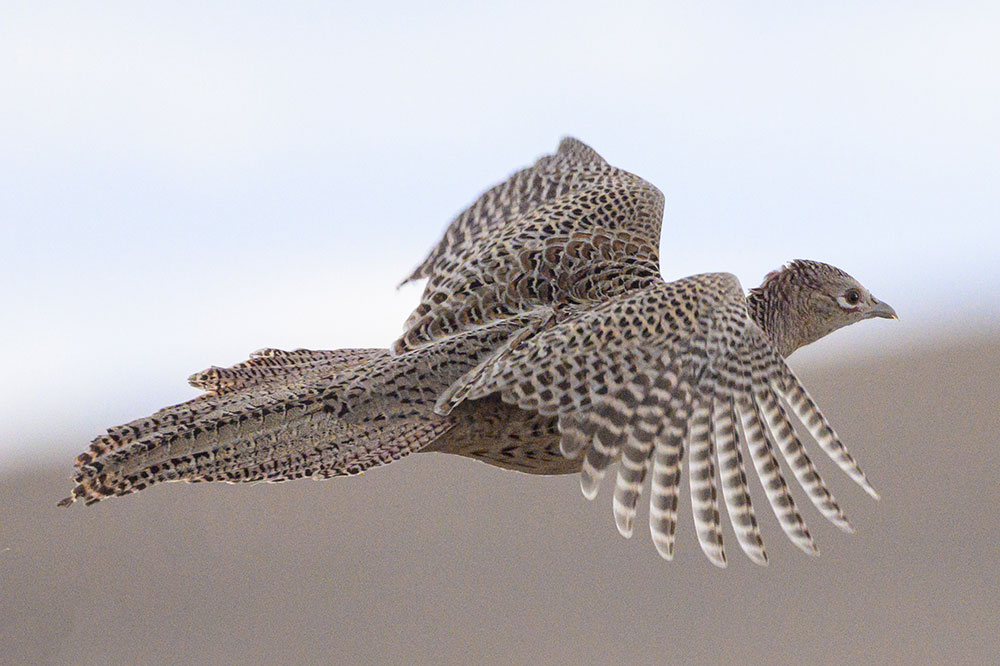
Ring-Necked Pheasant Hen in Flight
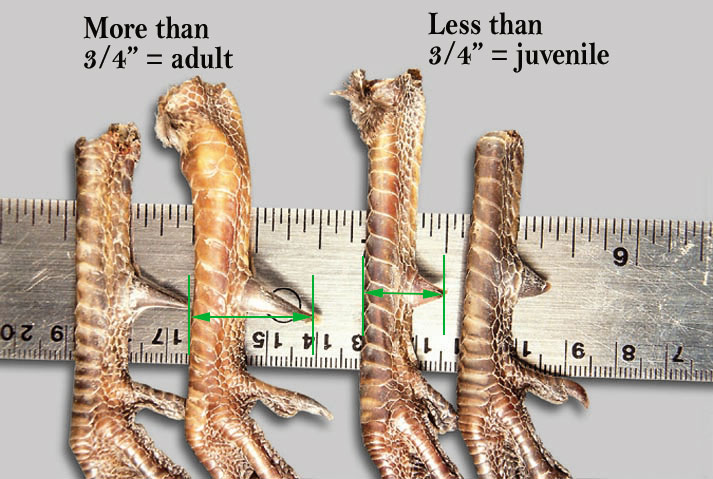
The spurs on the legs of rooster pheasants are the key to telling whether the bird is a juvenile or adult. In this photo, the two legs on the left came from birds that had survived at least one winter. The legs on the right came from young-of-the-year birds. Spur length on an adult male pheasant is generally 3/4 of an inch or more, measured from the outside of the leg bone to the tip of the spur. Adult spurs are also usually shiny black and sharply pointed. Juvenile roosters have spurs that are less than 3/4 of an inch, measured from the outside of the leg bone to the tip of the spur. Juvenile spurs have soft blunt points and dull coloration.
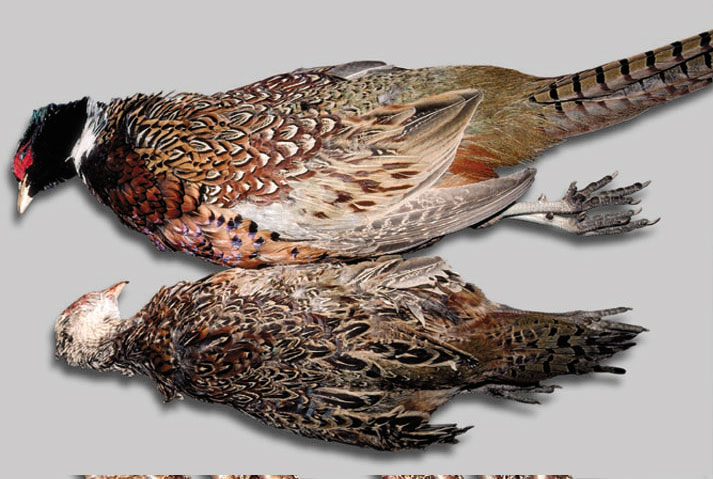
These two roosters were taken on an opening day of pheasant season, within a mile of each other. Both are young-of-the-year birds. The bottom bird is obviously a juvenile. The top bird is fully colored. To tell whether the top bird is an adult or juvenile, you need to check length and appearance of the spurs.
Sharp-tailed Grouse
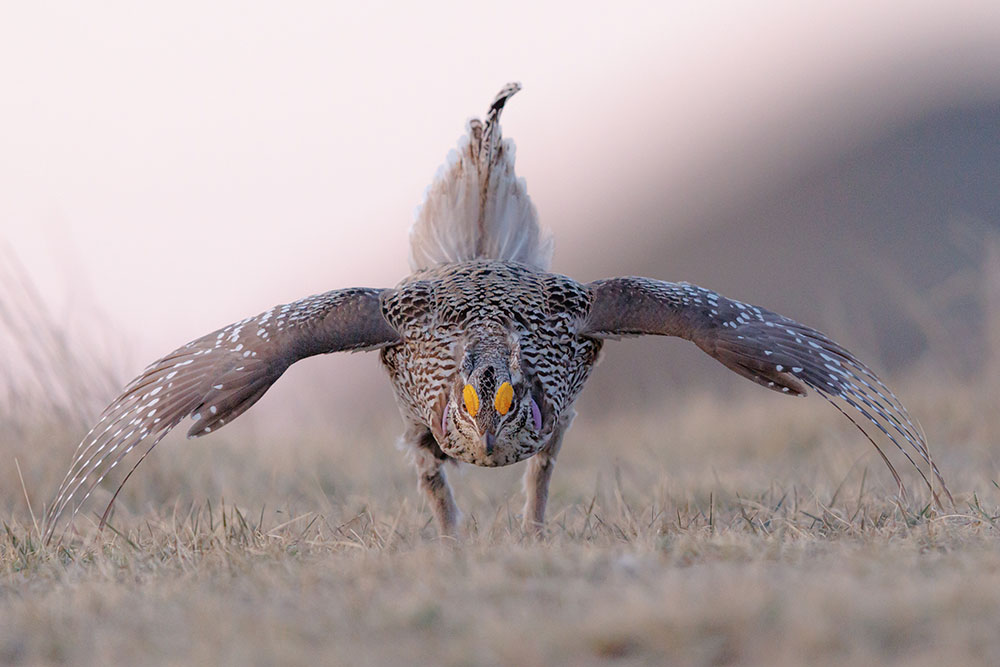
On their dancing grounds in spring, it’s relatively easy to tell the difference between male and female sharp-tailed grouse. Males are doing the dancing. Females are watching.
In fall, differentiating male sharptails from females isn’t quite as easy, but if you know what to look for, the differences are obvious.
Hunters who send in wing envelopes are also asked to pluck some feathers from the top of a sharptail’s head. There’s a good reason for that.
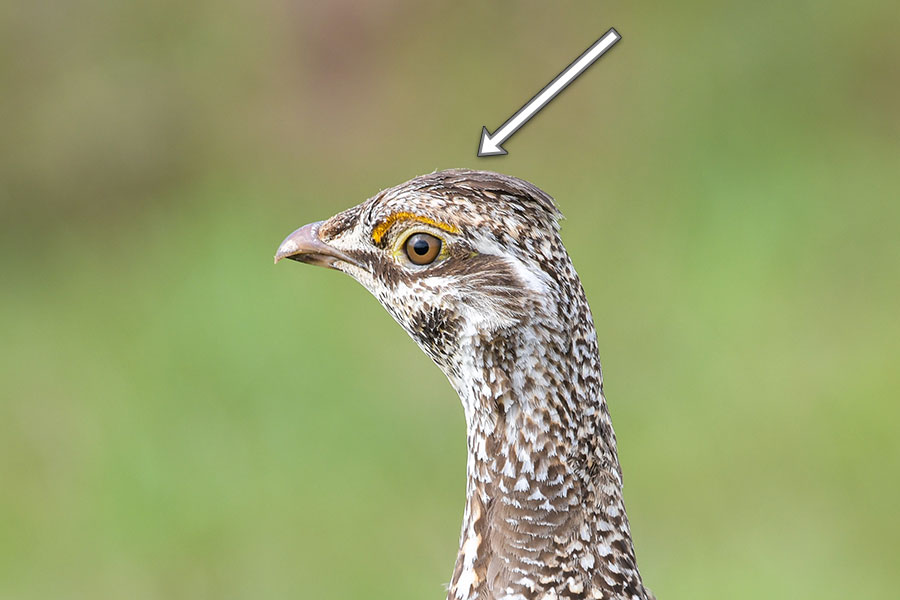
Male head feathers are black with a buff-colored or tan outside border. Female head feathers exhibit alternating buff and black stripes.
If head feathers don’t do it, look at the central tail feathers. The tips of these tail feathers look similar, so you need to pull them out, or pull back the feathers that cover much of the tail. Central tail feathers of a female sharptail carry buff-black markings similar to those of their head feathers. Male tail feathers have more white in them, and the striping or markings aren’t as consistent.
When you examine an entire grouse tail, you can also judge the bird’s sex. On a male, the feathers running either direction from the center are white and/or light gray. On a female, those same feathers are often mottled with buff/brown markings.
The accompanying photos shows these characteristics. If you know what to look for, it is sometimes possible to judge the sex of a sharptail as it flushes, by whether the tail is brown or white.
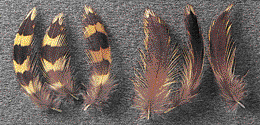
These sharptail head feathers came from envelopes sent in by hunters. Female feathers (left) exhibit an alternating buff-black striping pattern. Feathers from a male (right) are all black with a buff -colored border.
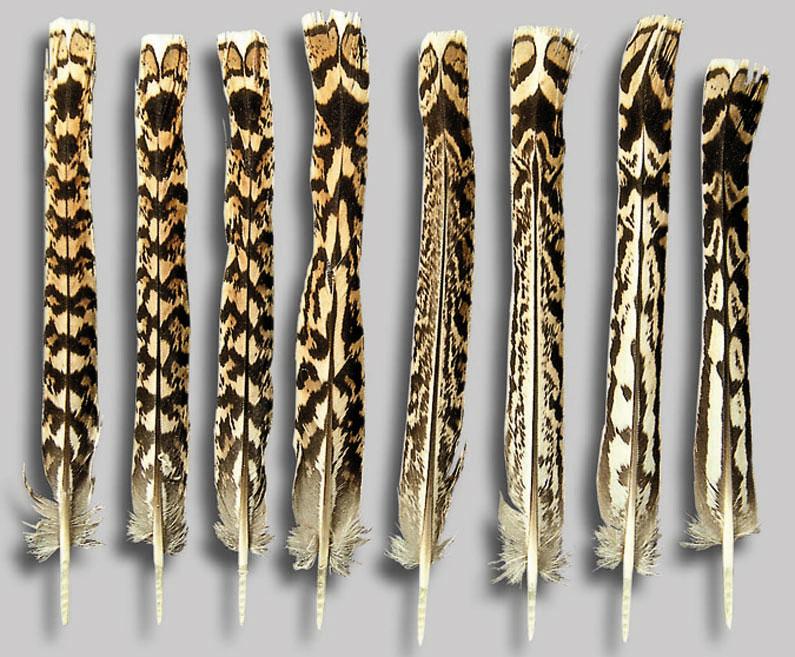
Central tail feathers from male and female sharptails. The coloration of these feathers is an indicator of sex. The four feathers on the left came from females. Note the alternating buff-black horizontal striping. The four male tail feathers on the right show more white, and the striping pattern is more vertical and not as consistent as on female feathers.
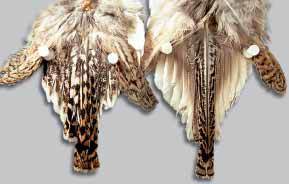
Pulling away feathers that cover a grouse's tail reveals another way to tell males from females. The feathers on either side of center on the female (left) are mottled. The same feathers on a male (right) are white on the ends and silvery-gray closer to the body.
Aging Sharp-Tailed Grouse
Aging sharptails is similar to aging other grouse species. If the number nine and 10 primaries are still growing – look for the bluish quill, you’re likely to see this early in the season – the bird is an adult. If primaries seven and/or eight are growing, the bird is likely a juvenile.
If the quills of all primaries are hard and white, that means they’ve stopped growing. If that’s the case, the appearance of the outer two primaries reveals age. If those feathers are pointed and frayed, the bird is young-of-the-year. If those feathers are rounded and smooth, the bird is an adult.
These close-ups of the outer primaries of two sharptails attest to the occasional difficulty of determining whether a bird is an adult or juvenile. The outer two primaries appear similar. Both outer primaries on the wing in the center photos above have smooth tips, indicating an adult bird. But look closely at the number nine (second from right) primary in both photos.
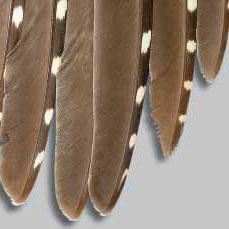
Adult Sharptail Wing
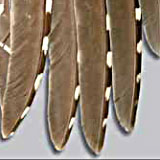
Young-of-the-Year Sharptail Wing
Sharp-Tailed Grouse vs Greater Prairie-Chicken
North Dakota currently does not allow hunting of greater prairie-chicken. When hunting sharp-tailed grouse, it is important to be able to differentiate between the species.
Gray (Hungarian) Partridge
The feather pattern on the shoulder of a gray partridge wing will tell you whether the bird is a male or female. A mottled coloration, overall, and brown crossbars on individual feathers, indicate this wing came from a female.
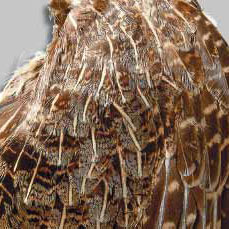
The feather pattern on the shoulder of a gray partridge wing will tell you whether the bird is a male or female. A mottled coloration, overall, and brown crossbars on individual feathers, indicate this wing came from a female.
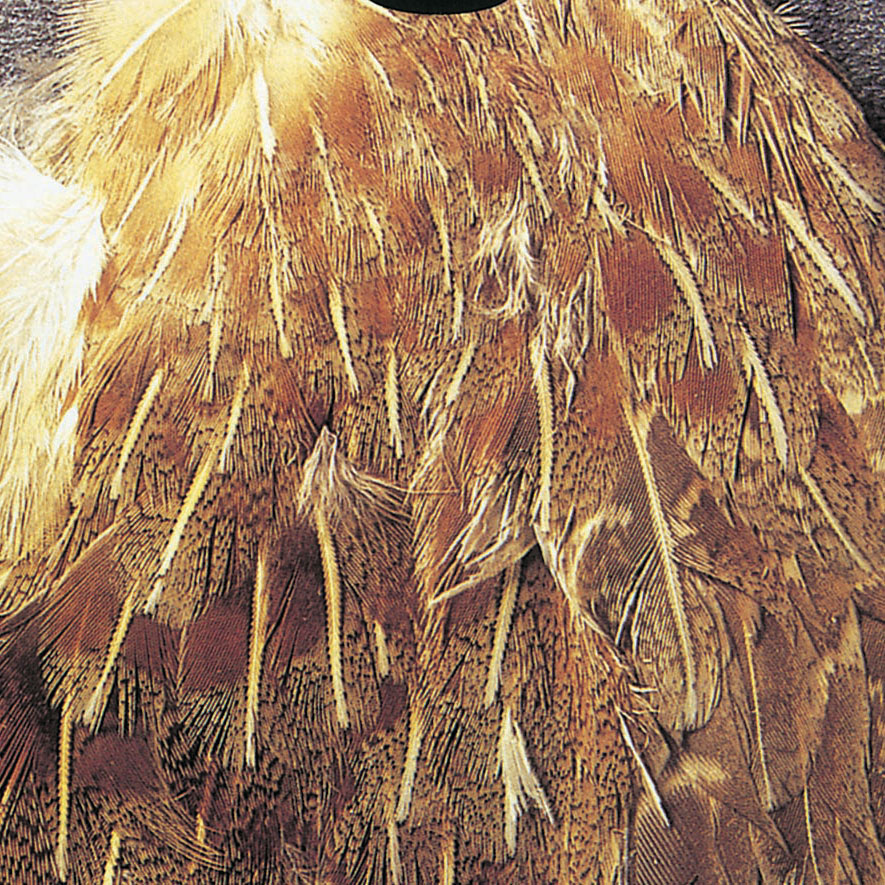
Shoulder feathers on a male gray partridge are somewhat rust-colored. Dark rust crossbars mark some of the feathers, and males do not have dark brown stripes or mottling found on females.
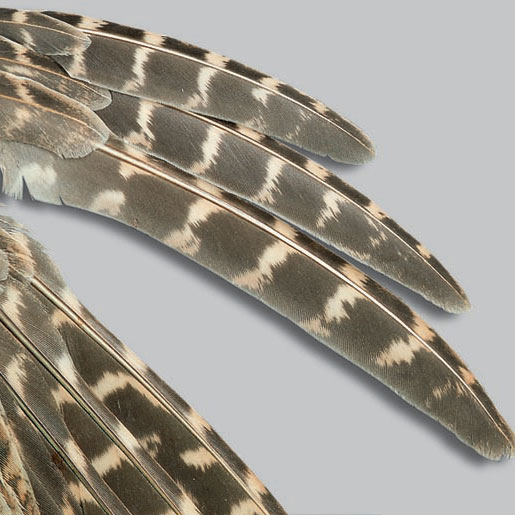
This wing is from an adult gray partridge. Note the relatively smooth tips of the outer two primary wing feathers.
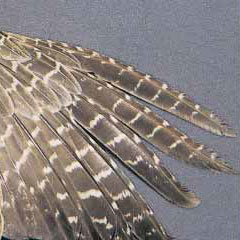
This wing is from a young-of-the-year male gray partridge. Note the frayed edges of the outer two (ninth and 10th) primary wing feathers.
Ruffed Grouse
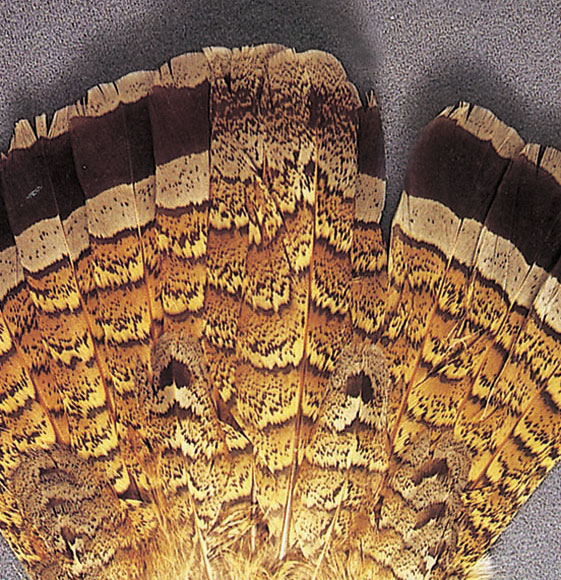
The best way to determine the sex of a ruffed grouse is to pull out a central tail feather and measure it.
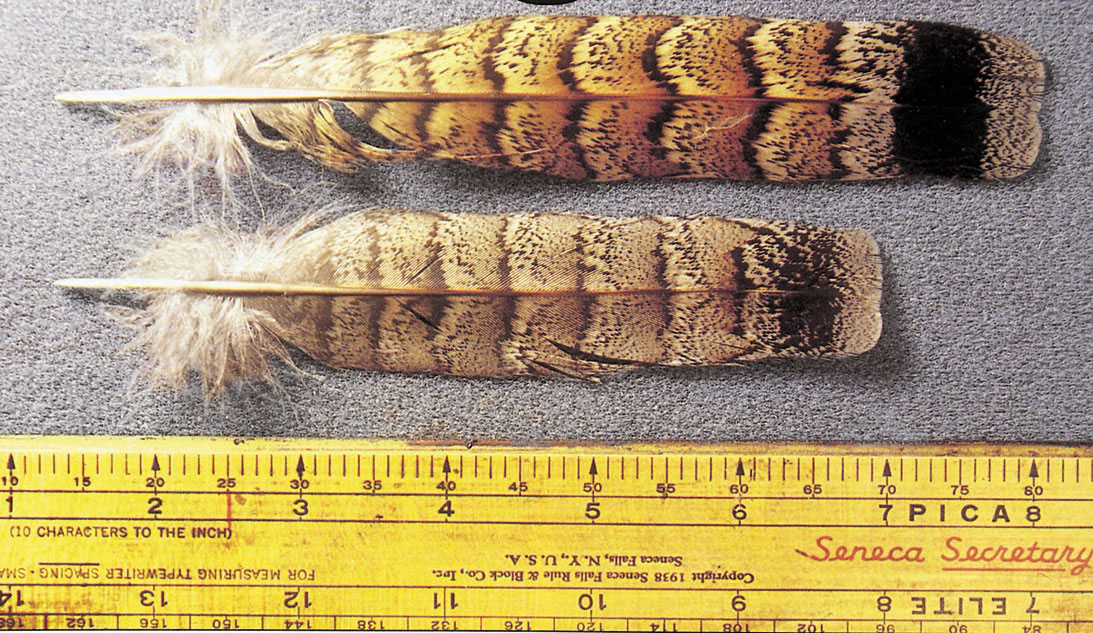
If the central tail feather measures six inches or longer, the bird is a male. If the feather is noticeably less than six inches, the bird is a female. In the photo above, the top feather measures about seven inches, and is from a male. The bottom feathers measure about 5-3/4 inches, and is from a female.
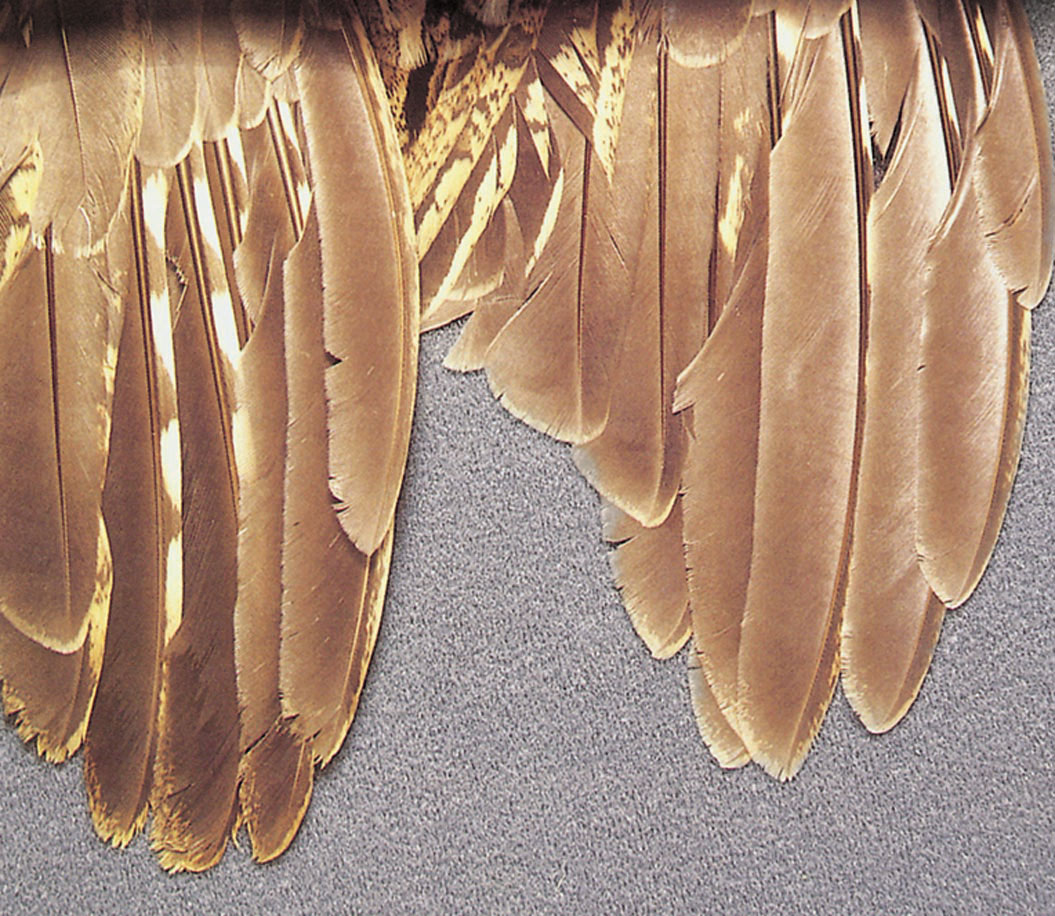
This photo of two ruffed grouse wings is a good example for determining age. The wing on the left is from a juvenile, characterized by frayed ends on the outer primary feather. The wing on the right is from an adult, distinguished by smooth round edges on the outer primary feathers.
Wild Turkeys
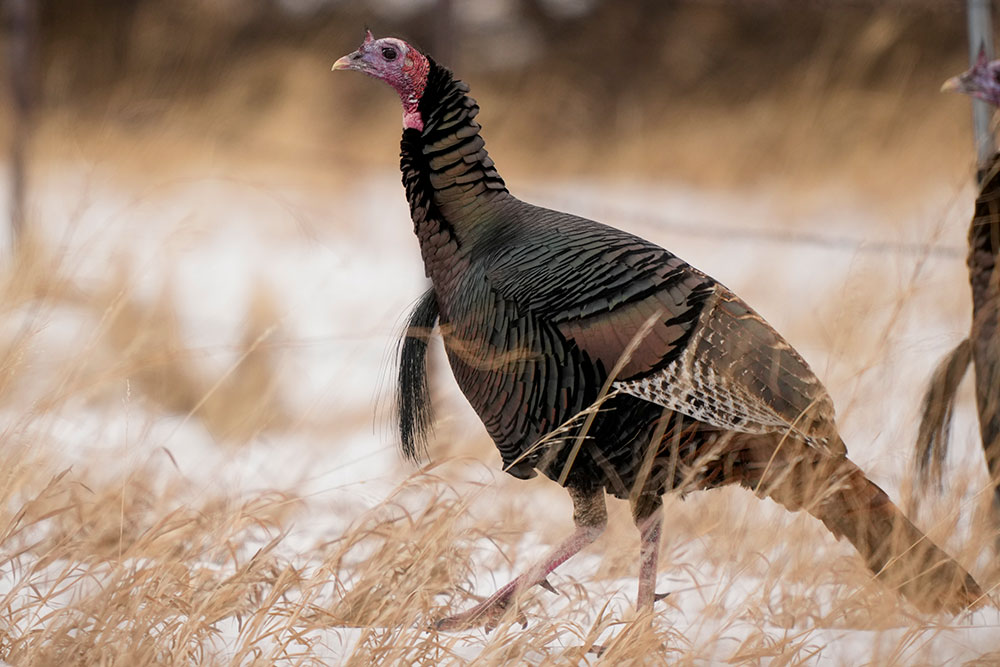
Male turkey. Breast feathers are all black. Bright red wattles become evident through spring breeding season, but generally fade away by fall and winter.
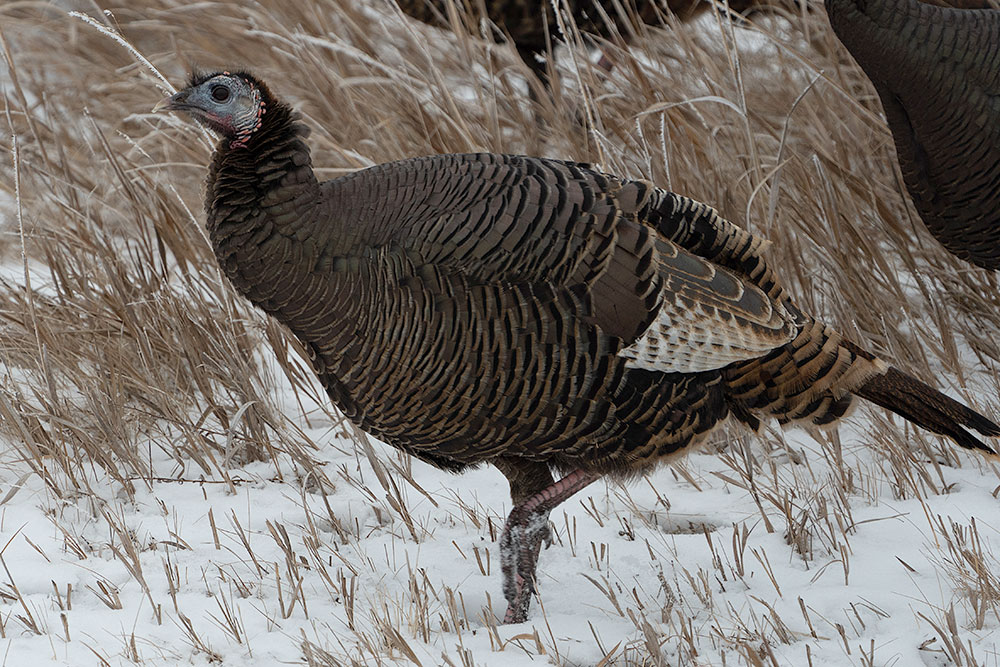
Female turkey. Note buff-colored barring on breast feathers.
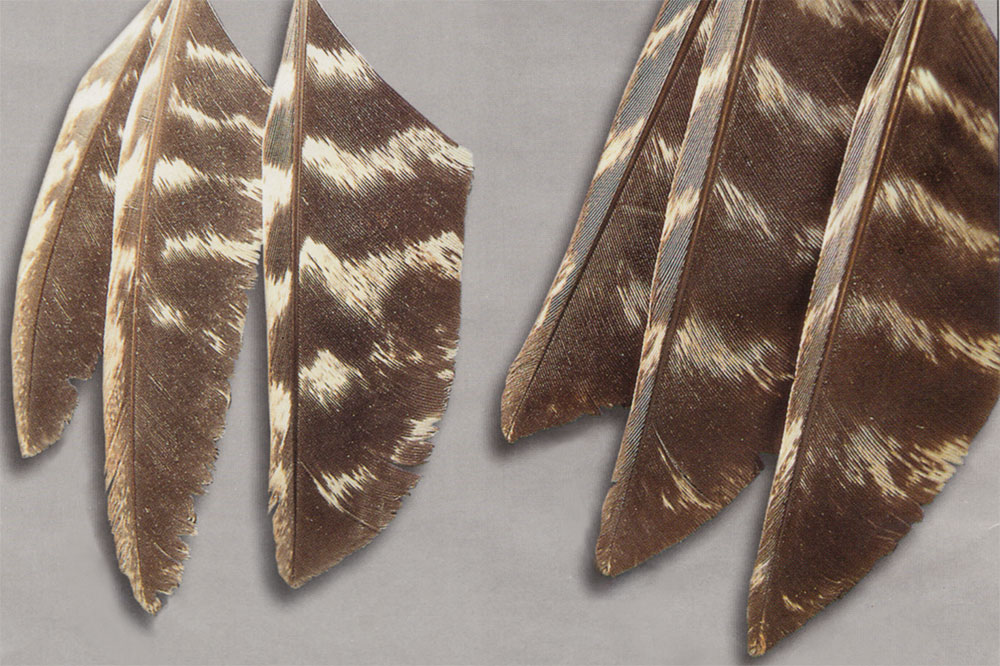
The frayed ends on the wing at left indicate a juvenile bird, while the smooth, rounded edges of the wingtips at right indicate an adult bird.

Individual breast feathers from male and female turkeys. The two hen feathers on the left are more dusty colored and exhibit an obvious buff or tan colored band on the outer edge. The male feathers on the right are all black and show a glossy sheen from light bouncing off them.
Endangered Whooping Cranes and Game Birds that Appear Similar
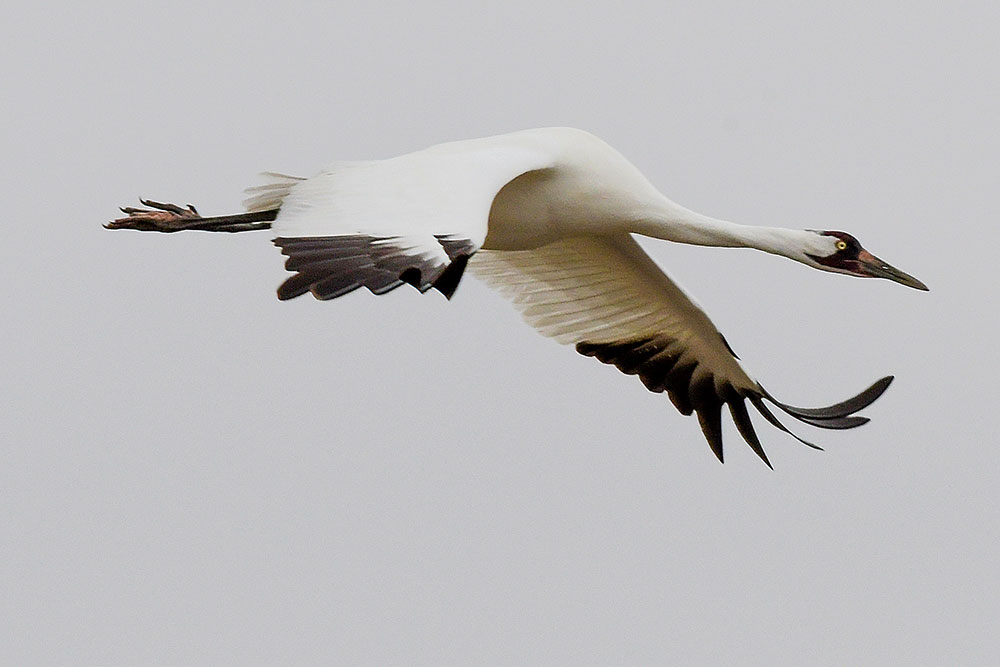
Whooping Cranes
(Nongame, Endangered)
- White with black wingtips.
- Juveniles have a mixture of white and brown body feathers, with black wingtips.
- Necks long extended straight forward in flight.
- Wingspan: 7 feet.
- Legs extend beyond tail in flight.
- Slow wingbeat.
- Flocks of 2 to 7, sometimes migrate with sandhill cranes.
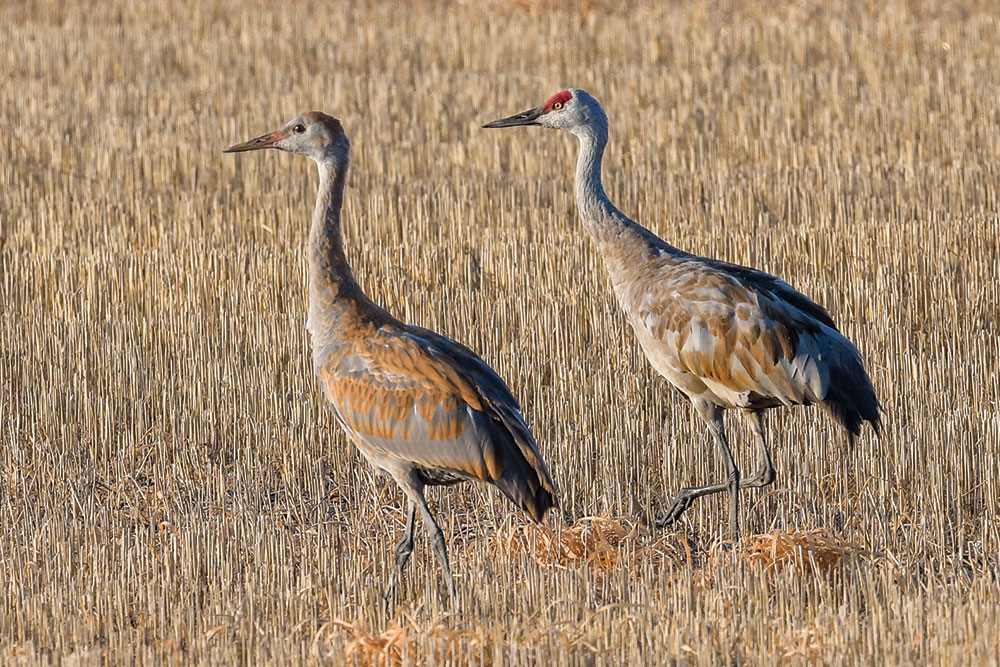
Sandhill Cranes
(Game)
- Gray, with dark wingtips. Neck long, extended straight forward in flight.
- Wingspan: 5 feet.
- Legs extend beyond tail in flight.
- Slow wingbeat.
- Flocks of 2 to hundreds.
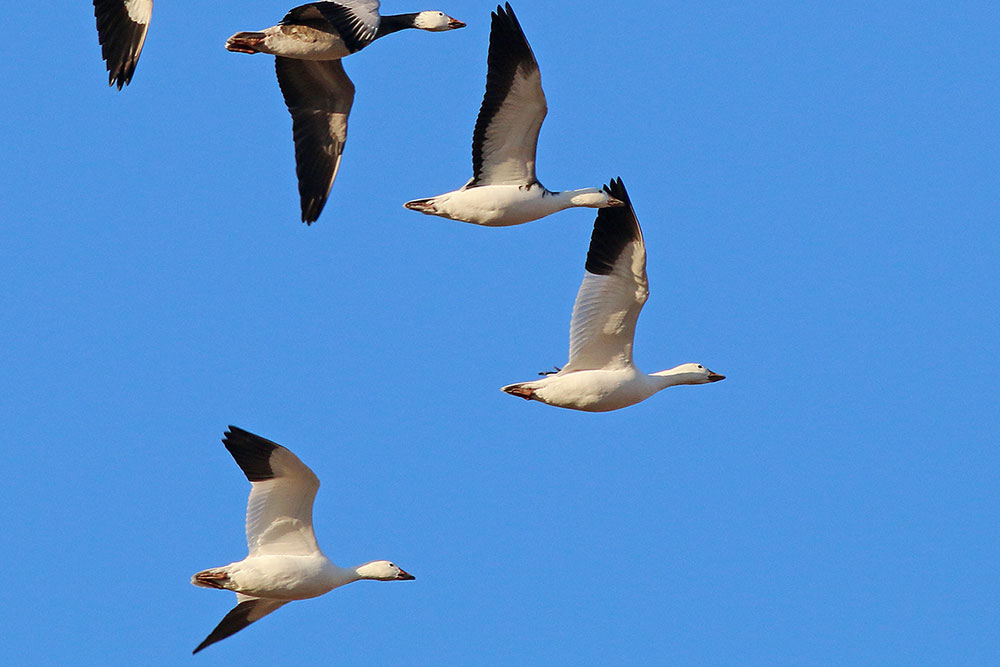
Snow Geese
(Game)
- White with black wingtips.
- Wingspan: 3 to 4 feet.
- Short legs.
- Rapid wingbeat
- Flocks of 20 to hundreds.
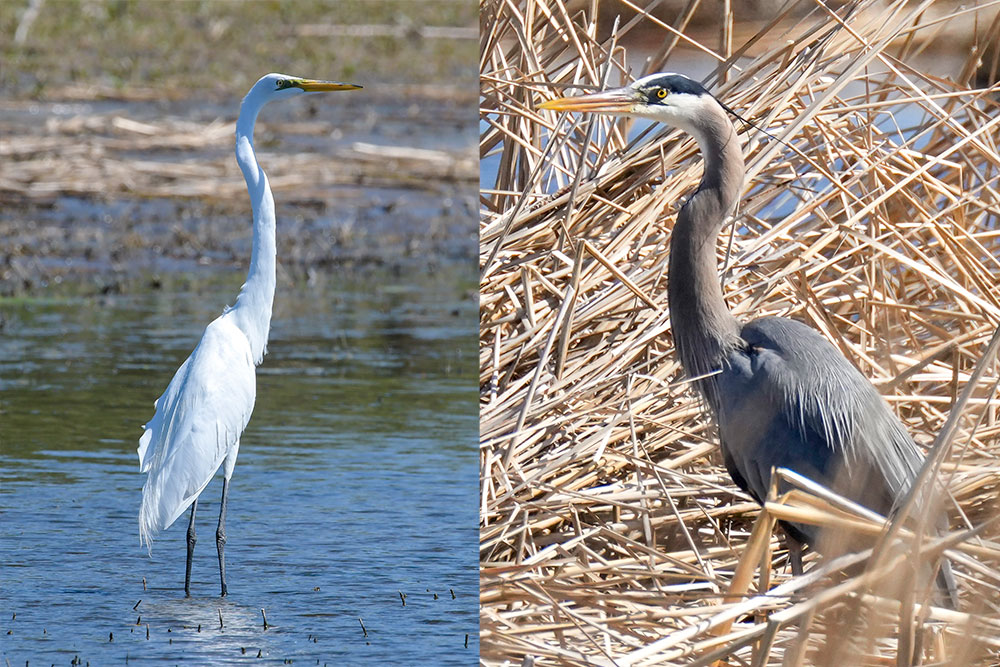
Egrets and Herons
(Nongame)
- White or gray.
- Neck long, folded in flight.
- Legs extend beyond tail in flight.
- Slow wingbeat.
- Typically found singly or in pairs.
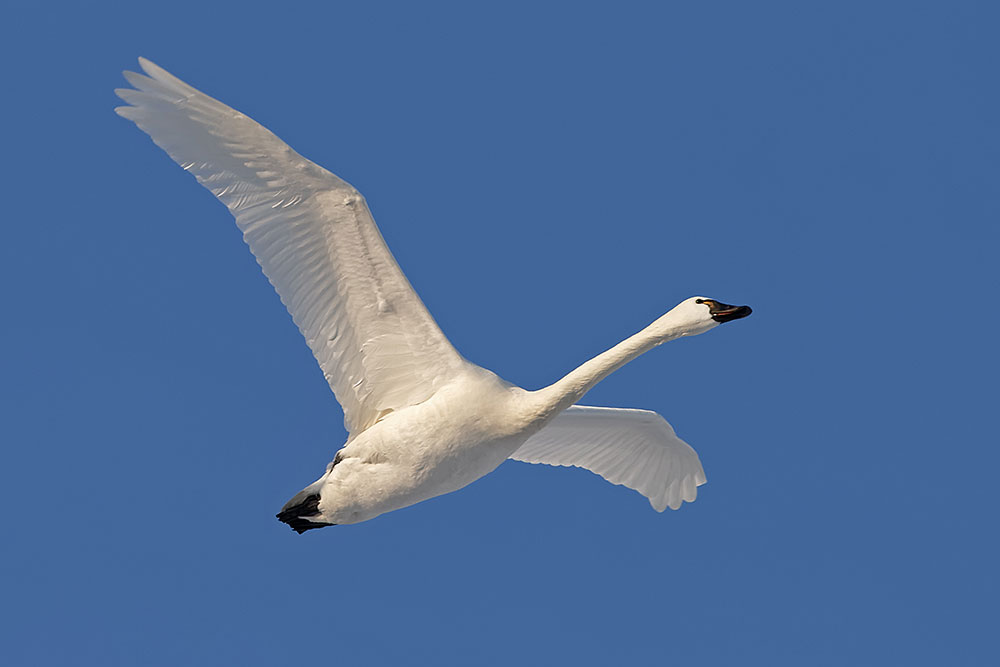
Swans
(Game - Tundra Swans)
- All white.
- Necks long, extended straight forward in flight.
- Wingspan: over 6 feet.
- Short legs, do not extend beyond tail in flight.
- Flocks of 2 to 10.
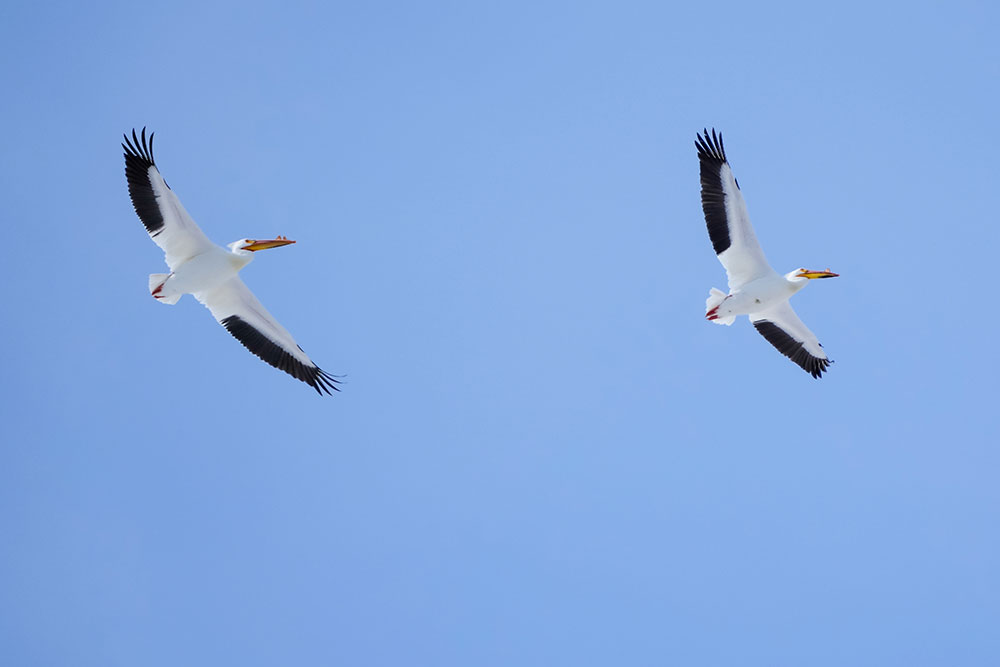
White Pelicans
(Nongame)
- White wings with black edgings extending almost to body.
- Necks long, folded in flight.
- Wingspan: 8 feet.
- Short legs, do not extend beyond tail in flight.
- Long, yellow bill.
- Often in flocks of 20 or more.

